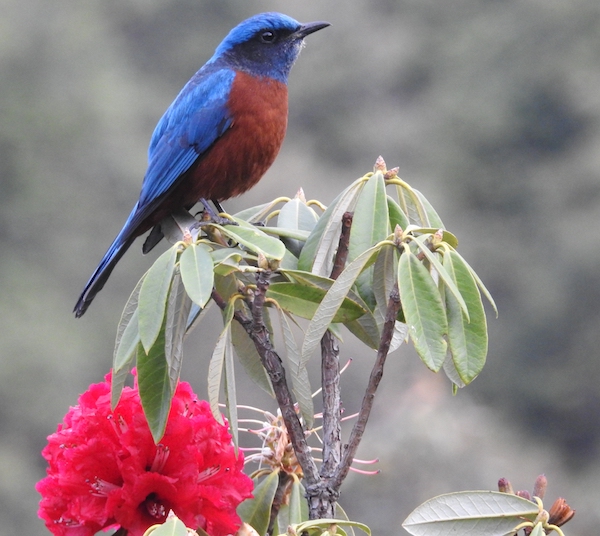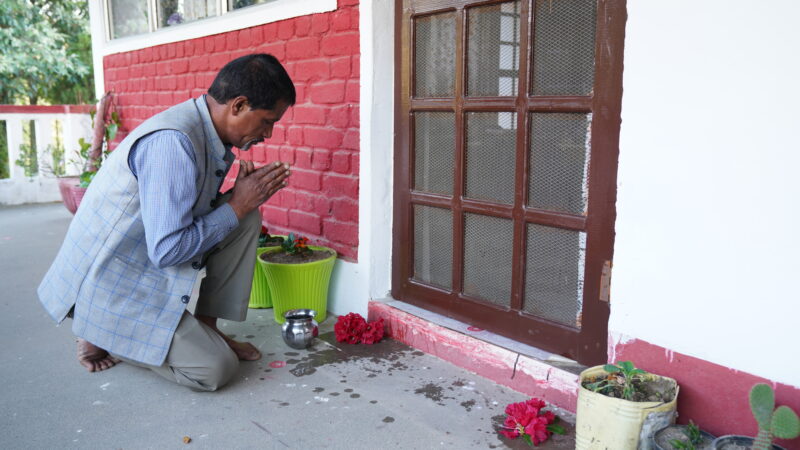Rishu Nigam is a writer and documentary filmmaker focused on telling climate stories. She wrote this piece with mentoring support from South Asia Speaks. This was first published in Guernica, a non-profit magazine dedicated to global art and politics, published online since 2004.
Rhododendron blossoms have been at the centre of this Himalayan village’s spiritual life. What happens when they arrive too early?

In Mukteshwar, a village perched 2,200 meters above sea level in the Indian Himalayas, rhododendrons announce the arrival of spring. When their effusive red blossoms unfurl over the dry winter landscape, and when dozens of species of smaller flowers burst into bloom at the same time, Phul Dei can begin. Children, especially girls, set out in small groups early in the morning to pluck flowers from the forest and scatter them on their neighbours’ doorsteps. The flowers are an offering to Saraswati, the goddess of knowledge and wisdom. They are believed to bring good luck, as people seek blessings for a full harvest and the well-being of their families. When the girls head back, they offer a few flowers at local springs, with a prayer for a gentle summer.
Or at least that’s what Phul Dei is supposed to be like. When I arrived in Mukteshwar this April, at what should have been the height of flower season, something was clearly wrong. “There are neither children here, nor flowers,” my friend Mohan Karki said when he greeted me. He’d spent the morning hunting for rhododendrons in the forest behind his house and returned with only a single fistful of blossoms to place near the entrance of his cottage.

The flowers that once reliably bloomed in March — which is when Phul Dei falls on the calendar — are now blooming in February. By the time the festival ends in mid-April, the flowers are nearly gone, which is a problem, for the people and their forests: The rhododendron is a keystone species, acting like glue by holding the habitat together. Recent studies have found that the rhododendron is showing a “precocious flowering pattern” because of an increase in average annual temperature in the Himalayas. With future temperature projections climbing ever higher, scientists believe the rhododendron could move toward higher elevations to cope. If that happens, the birds and insects that depend on its blossoms at lower altitudes would lose their essential food source; they would be forced to migrate, or go extinct. This could have devastating repercussions throughout the Himalayan ecosystem.
Mohan’s heart is broken by the diminished blooms, but he tells me that not everyone shares that point of view. People content themselves with a few random flowers to perform the rituals at their homes. Instead of marking the arrival of spring with ritual, the village marks it with the arrival of thousands of tourists, who flee the burning summers in the lowlands — and who spend copiously in the highlands. Villagers may miss the ritual, but the appreciate the income. Mohan, on the other hand, feels the loss.
“They don’t realise what we are losing,” Mohan said. “It’s not just the flowers. It’s the kinship that holds us together that we are losing.”